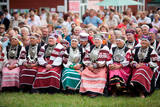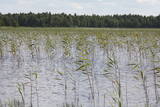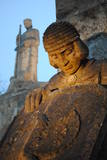| Nr | Name | Beschreibung |
|---|---|---|
|
The owner of the farm offers attractive tours during which you will learn about chinchillas, animal enclosures, as well as quails which you can view and purchase. |
||
|
Ein mannigfaltiger Waldbestand, der durch die Vidzemer Straße und die Eisenbahnlinie Rīga-Lugaži halbiert ist. Das ist das Gebiet, in dem der am meisten gefährdete Vogel der Welt – die Blauracke – gefunden wird. Zwischen ¼ und 1/5 des lettischen Bestandes an Krähen findet man hier. Es ist auch eines der letzten Nistgebiete des Grünspechtes.
|
||
|
Die südöstlichste Ecke Estlands ist ein Gebiet mit einzigartiger kultureller Nuance, hier lebt eine interessante ethnische Minderheit – die Setus. Infolge der historischen Lage an der Grenze ist die Seto-Kultur eine Mischung von östlichen und westlichen Kultur – die Einflüsse kann man in ihrer Sprache, im Lebensstil, in der Küche und bei der Volkstracht erkennen. Besonders einzigartig ist die Gesangstradition der Setos - bezeichnet als Leelo, die zur UNESCO-Liste der Meisterwerke des mündlichen und immateriellen Erbes gehört. Zum Kennenlernen von Setomaa eignet sich am besten die touristische Route „Seto Külävüü“ (Seto Dorfgürtel). Die Route beginnt in Võõpsu und endet in Luhamaa und passiert mehrere Dörfer. Traditionelle Seto Küche gibt es in Tsäimaja im Seto Bauernmuseum (+372 505 4673, www.setomuuseum.ee) und in Taarka Tarõ im Seto Gemeindehaus in Obinitsa (+372 5620 3374, http://taarkatare.com ). Für Gruppen Verpflegung auf Vorbestellung, beim Wunsch werden Auftritte der lokalen Chöre und Führungen angeboten. |
||
|
Just 20km from Valmiera down the river Gauja in Gauja National park theritory we own fabilous place for lovers of leisurely holidays with good active tourism possibilities. Main building with kitchen, shower, WC and higher standard accomodation possibilities. Big shelter with lodges next to it. Big area with fireplace. Sleeping facilities in 2 nd floor and some extra sleeping facilities and big shelter in separate building. There are You can find marked bicycle trail Valmiera-Cēsis next to the CAMP CAUNĪTES. Guests can use canoes for fishing or short tours along the river Gauja. |
||
|
Маршрут, для прохождения которого не требуется специальная подготовка, если его проходить летом. Абава – это река с самой впечатляющей древней долиной в Курземе. Она есть и остается «классикой» Курземе. На Абаве несколько выраженных стремнин, обычно в местах, где в ее русле и по берегам появляются небольшие обнажения доломитовых пород. На участке между Веги и Рендой падение реки уменьшается и она становится более спокойной. Информация о маршруте от Latvijas Lauku forums |
||
|
One of the largest karst areas in Estonia is found here. The unique Witch’s well is one of the most interesting parts of this area. During spring floods (not every year, and for only a short period of time), the well erupts with underground river waters to create an unusually powerful karst stream that can pump out as much as 100 litres per hour.
|
||
|
There is picnic area and information stand at the end of the forest path leading from Muiznieki to Klanu Bog. Klanu Lake was formed in the place of Littorina marine lagoon. Nature restricted area was established to protect biotopes in the area of Klanu, Dziru and Stavu Lakes. There is wide information about the area available on the information stand.
|
||
|
Brāļu kapos apbedīti aptuveni 2000 karavīru. Pirmos kritušos strēlniekus — Andreju Stūri, Jēkabu Voldemāru Timmu un Jāni Gavenasu — apbedīja 1915. gada 15. oktobrī. Sākot ar 1915. gadu, kapos sāka apbedīt Pirmā pasaules kara kaujās kritušos strēlniekus, vēlāk Februāra revolūcijas laikā nošautos kareivjus. Stučkas valdības laikā 1919. gada pavasarī šeit apbedīja Brīvības cīņās pret vācu vienībām un Dienvidlatvijas brigādi kritušos latviešu strēlniekus. Pirmās Latvijas brīvvalsts laikā Brāļu kapos apbedīja ap 800 Latvijas armijas kareivjus un virsniekus. 1941.—1942. gadā Brāļu kapos apbedīja 15 nacionālos partizānus, kā arī pārapbedīja komunistiskā režīma terora upurus. Līdz 1944. rudenim šeit apbedīja arī vairākus desmitus bijušās Latvijas armijas virsnieku un karavīru, kuri bija dienējuši Latviešu policijas bataljonos un Latviešu leģionā. Abās pusēs ieejas vārtiem (augstums 10 metri, platums 32 metri) divas jātnieku skulptūru grupas (augstums 3,3 metri). Liepu gatve (205 metri) savieno vārtus ar galveno terasi, kuras centrā novietots 1 metru augsts mūžīgās uguns altāris, bet abās pusēs ozolu birzis. No terases abpusējas kāpnes ved uz regulāri veidotu kapulauku. Tā malās atrodas divas "Mirstošo jātnieku" skulpturālās grupas (augstums 3,6 metri), vidus daļā atrodas augstcilnis "Kritušie brāļi". Pret katru kapa vietu novietota smilšakmens vai plienakmens plāksnīte ar kritušā uzvārdu un vārdu vai uzrakstu "Nezināms". Ansambli noslēdz 6 metrus augsta siena ar Latvijas apriņķu un pilsētu vēsturiskajiem ģerboņiem. Pie sienas atrodas četri senlatviešu karavīru tēli, kas simbolizē Latvijas novadus - Kurzemi, Zemgali, Vidzemi un Latgali, bet tās centrā uz 9 metrus augsta sienas masīva paceļas monumentāla figūra "Māte Latvija", kas noliekusi vainagu pār kritušajiem dēliem. Brāļu kapu memoriālais ansamblis ir izcirsts no Allažu šūnakmens, izmantots arī Itālijas travertīns un smilšakmens. Pirmmetu izstrādāja tēlnieks Kārlis Zāle, arhitekts Aleksandrs Birzenieks, Pēteris Feders un Andrejs Zeidaks. |
||
|
Der einzige Schlosstorturm in Lettland, wo die Tore mit den Fragmenten des sich hebenden Gitters geblieben sind. Einen Aussischtsplatz ist eingerichtet. Die Ruinen der Burg. |
||
|
Befindet sich nahe der Mittelschule von Rūjiena. Die vom Bildhauer Kārļis Zemdega errichtete Skulptur „Madonna Orans” wurde 1936 zum Andenken an die ertrunkene Lehrerin der Gemeindeschule Jūlija Skujiņa (24 Jahre alt) aufgestellt. Es gibt verschiedene Legenden über die Anlässe des Todes. Eine der Legenden ist mit einer unglücklichen Liebe zum Pastor Roberts Slokenbergs verbunden. |
||
|
Atrodas Sedas purvā (Sedas dabas takas malā) ar plašu skatu uz izstrādātajām kūdras platībām. Sedas taku ieteicams izstaigāt vietējā gida pavadībā T: + 371 2636162. |
||
|
Das Restaurant befindet sich im Zentrum von Rezekne (neben der Hochschule) und es ist in einem Gebäude mit gewölbtem Keller eingerichtet. Lettische Küche: Kalte Suppe, dünne Pfannkuchen, Kartoffelpfannkuchen, Schweinebraten, Schweinrippen, Frikadellen aus Kalbfleisch, geschmortes Lammfleisch, gebratener Kabeljau oder gebratene Forelle. Das besondere Gericht: Salat aus Ziegenkäse. |
||
|
The viewing area on the Ērgļi (Ērģeles) cliffs offers an impressive view of Latvia’s most monolith sandstone cliffs (up to 22 metres high) – this is the highest location in the Gauja River valley. Please be very careful and don’t go anywhere near the edge of the cliff!
|
||
|
Das Café befindet sich im 67. Kilometer der Straße Riga – Liepaja (A9). Es ist ein von Reisenden beliebter Ort für Mahlzeiten. Lettische Küche: Ampfersuppe, eingelegter Hering mit Quark, ländliche Mahlzeit (Kartoffeln, Ei, geräuchertes Fleisch, eingelegte Gurke), Schweinefleischfrikadellen, Stroganoff der Region Kurzeme, geschmortes Sauerkraut mit Jagdwürsten, Gerstengrütze mit Fleisch, Roggenbrotcreme, Brotsuppe mit Schlagsahne. |
||
|
Radošajā galerijā var apskatīt vairākas ekspozīciju zāles ar skulptūrām no moto/auto detaļām, individuāli pārveidotiem motocikliem, kuriem ir savs stāsts un filozofija. Latvijā vienīgais ar šādu mākslu un piedāvājumu saistīts uzņēmums. Apmeklētājiem ir iespēja doties nelielā ekskursijā, galerijas apskatē ar gidu. Pēc apmeklējuma ir iespēja doties uz kafejnīcu, kurā var nobaudīt kafiju un mājās ražotus kulinārijas izstrādājumus, arī noskatīties dažādas video īsfilmas par uzņēmuma darbību. Pieejama unikālo NESTER CUSTOM suvenīru iegāde. |
||
|
Ap 100 gadus veca priežu audze, ko iesēja pagājušā gadsimta sākumā. Sēklu materiāls bija nācis no kādas Vācijas (Darmštatē) sēklu tirdzniecības firmas. Mūsu klimatiskajos apstākļos priežu stumbri izauga līki un kroplīgi. Savdabīgā audze labi redzama no šosejas malas.
|
||
|
Alsunga wurde ursprünglich als Region Bandava schon 1230 in einem Vertrag des päpstlichen Gesandten mit dem Stamm der Kuren genannt. 1341 war Alsunga (deutsch: Alswangen, Kurisch: alšu vanga = Erlenlichtung) als „ein festes Haus“ benannt, 1372 begann der Bau einer aus Steinen gemauerten Burg in Form eines Vierecks, in dem der Fürst des Livonischen Ordens lebte, der dem Komtur von Kuldiga unterstand. Anfänglich wurde der östliche Korpus als Wohntrakt genutzt, der südliche als Wirschaftsflügel. Später, im 15. – 18. Jh. entstanden die Wehrtürme und die übrigen Teile des Schlosses. Die Ausmaße des Schlosses im Barockstil waren eindrucksvoll genug. Heute beherbergt es die Stadtverwaltung, ein Museum, ein Touristeninformtionszentrum und noch weitere Einrichtungen. |
||
|
Die Schlammregenarationsteiche – ein Ort,
wo der verbrauchte Schlamm vom Kurort und
Rehabilitationszentrum „Jaunķemeri“ deponiert
wird.
|
||
|
Atrodas Tirgoņu un Zāļu ielas krustojumā (Zāļu ielā 12). Interesanta ar faktu, ka šī ir vienīgā padomju laikā uzbūvētā (1948. g., pēc citiem avotiem – šajā gadā atjaunota) Latvijas baznīca. |
||
|
Der nördliche Teil der Festung von Liepāja schließt den Kriegshafen ein, den nach der Unabhängigkeit Lettlands zu einem offenen Territorium wurde. Nördliche Forte, Küstenschutzbatterien, die Orthodoxe Meereskathedrale St.Nikolai, Wasserturm, Manege, Gefängnis von Karosta, Nordmole und Oskara Kalpaka-Schiebebrücke. |
||























